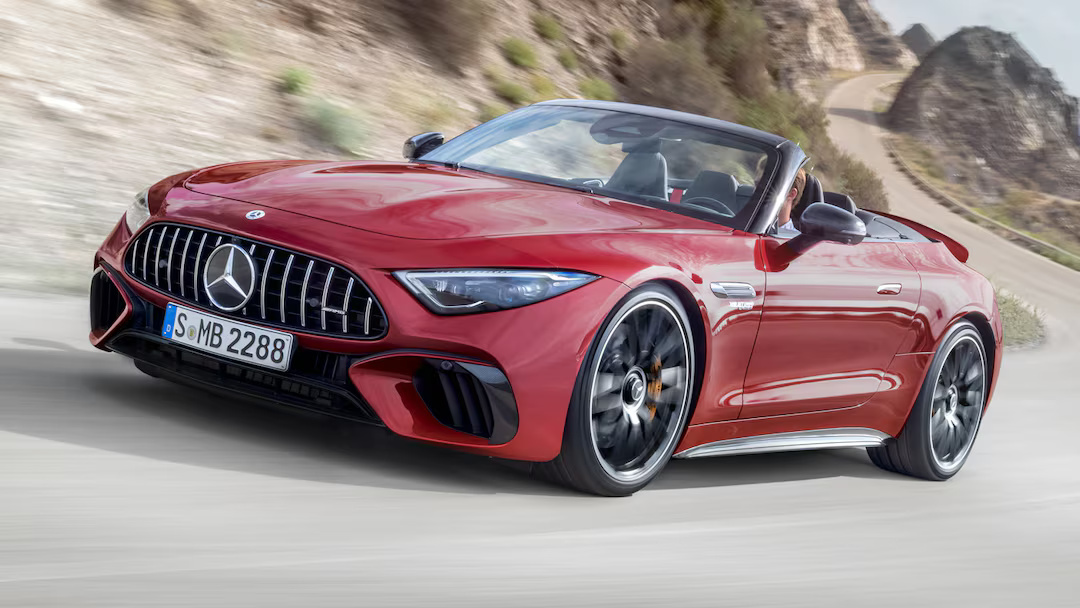The last thing you want after buying a used car is to be left on the side of the road waiting for a recovery truck. It’s one of those scenarios that can make a purchase turn sour and that’s before you factor in repair costs and repair times.
To help minimise any of those problems, we’ve gathered a list of the most reliable used cars that are more than five years old.
This survey has a massive field of responses, with 29,967 motorists telling us about their cars, including whether they have or haven’t encountered any faults.
Specifically, the most reliable used cars in this story were built between 1998 and 2018. For used cars built after these dates, we have an alternative story for the most reliable new cars.
If any of the cars listed below do tempt you, you can read our full used car reviews or see our latest used car deals to find out more.
1. Audi A3 Saloon
The Audi A3 Saloon is our top pick in this category, particularly the 35 TFSI Sport 4dr variant. It goes from 0-62mph in 8.4 seconds, delivers an impressive 51.4mpg, emits 124g/km of CO2, and comes with seating for five and a 425-litre boot.
It falls under insurance group 22E. As for its strengths, the A3 Saloon boasts powerful and efficient engines, an excellent blend of comfort and agility, and a classy interior.
However, it’s not without flaws; rear-seat space is limited, the boot isn’t especially generous, and some versions offer a firm ride at low speeds.

The Audi A3 Saloon is a compact executive car that feels very solid, thanks to its smart, high-quality interior and tidy driving dynamics.
However, it also has a good reliability record to back up that sense of solidity, with owners of both petrol and diesel examples reporting no issues with their cars in our latest survey.
Reliability rating: 100%
If you’re after a petrol car, we reckon the 148bhp 1.5-litre engine is the best option. Or, if you want a torquey diesel, the 148bhp 2.0-litre engine is good too. We found a 2017 Audi A3 Saloon 1.5 TFSI S line with 49,000 miles priced at £12,790.
Also Read: 10 Vehicles With Best Long-Term Fuel Economy That Save You Money Year After Year
2. Kia Sportage diesel
The Kia Sportage diesel may not seem like the most obvious choice in today’s market where diesel is less fashionable than it once was, but if you’re in search of a reliable used family SUV, the previous-generation Sportage diesel stands out as the most dependable option available.
Our pick is the 1.6T GDi 157 48V ISG 3 5dr, which accelerates from 0-62mph in 9.9 seconds, returns a fuel economy of 42.8mpg, emits 149g/km of CO₂, and offers seating for five along with a generous 562-litre boot. It falls within insurance group 20E.
Among its strengths, the Sportage offers a spacious and practical interior ideal for families, represents good value as a used buy, and petrol-engined variants have demonstrated a good reliability track record.
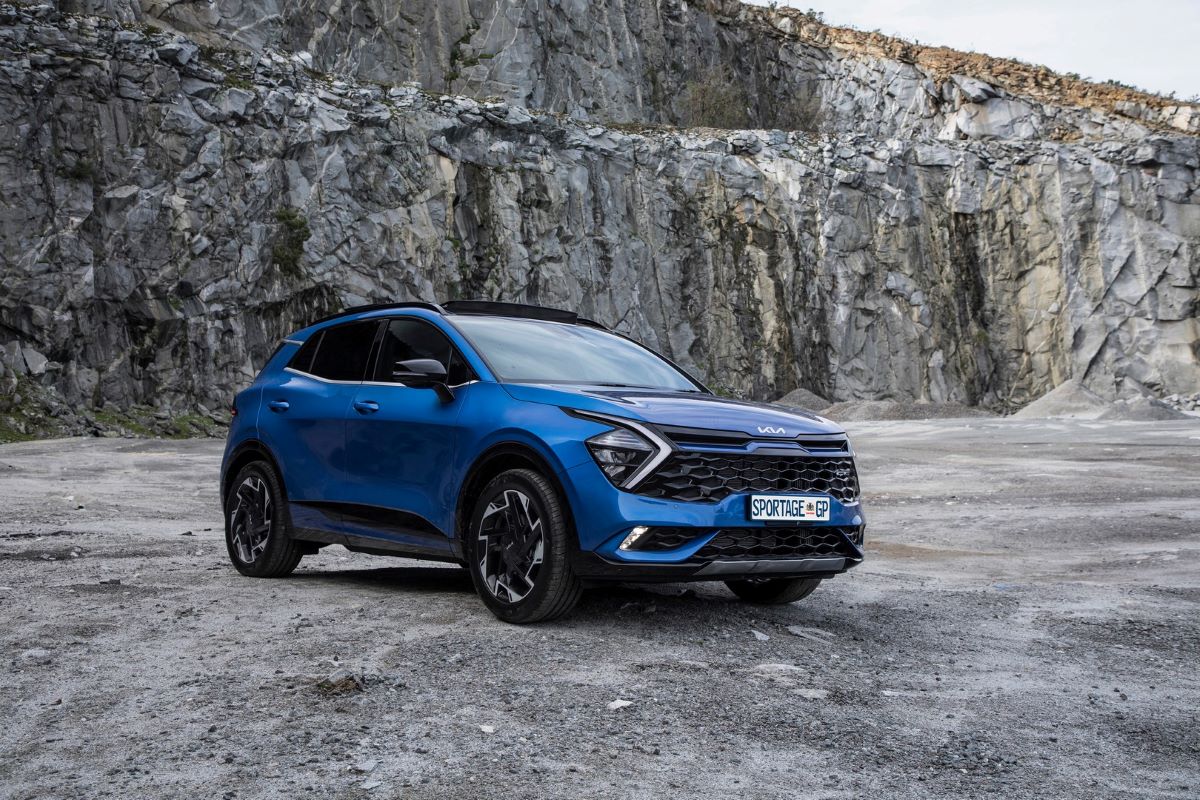
On the flip side, diesel-engined versions have a poor reliability history, handling is not especially engaging, the ride can become unsettled with larger wheel options, and some interior materials don’t feel as premium compared to rivals.
Reliability rating: 100%
In our latest reliability survey, not a single owner of the diesel Sportage registered between 2016 and 2018 reported any issues, matching the excellent performance seen in the Audi A3 Saloon.
However, it’s important to note that later models from 2019 to 2021 proved to be far less reliable, ranking near the bottom of our survey results.
Additionally, the Sportage should be very economical to run officially, the 114bhp 1.7-litre engine was capable of averaging 61.4mpg under the now-superseded NEDC test cycle. We found a 2017 Kia Sportage 1.7 CRDi 2 with 46,990 miles on the clock, priced at £10,500.
3. Lexus NX
The Lexus NX is another strong contender when it comes to reliability. Lexus is renowned for building dependable vehicles, and the previous-generation NX is no exception.
It has consistently been the highest-rated family SUV in our reliability survey for the past two years. In 2023, just 2% of owners reported minor issues with their vehicles, and in 2024, no owners recorded any faults at all.

Its key strengths include fantastic reliability, a long warranty, and a quiet, smooth drive if handled gently. However, it’s not without its drawbacks. The NX is expensive to purchase and maintain, doesn’t offer the most engaging driving experience, and the infotainment system can be cumbersome to use.
Reliability rating: 99.6%
Despite its hybrid engine, the NX isn’t as fuel-efficient as some might expect, and the ride can be somewhat jittery, particularly around town. Still, it remains a solid and trustworthy option for those prioritizing reliability. We found a 2016 Lexus NX 2.5 300h Luxury 4WD with 43,444 miles available for £16,000.
The NX has a starting price just under $42,000, but luxury-focused shoppers might find the base trim lacking in features. Stepping up to the mid-level NX350 adds a turbocharged 2.4-liter four-cylinder engine delivering 275 horsepower, making for a more fitting performance upgrade.
We recommend choosing the NX350 Luxury trim, which enhances the experience with a host of premium features including a larger 14.0-inch infotainment screen, quilted leather seating, cloud-based navigation, upgraded ambient lighting, 20-inch wheels, four-way adjustable lumbar support for the driver, and adaptive headlights.
For those seeking a bolder aesthetic and sportier dynamics, the NX350 F Sport is a similarly priced alternative. Buyers should also note that selecting one of three premium paint colors will cost an extra $500, while opting for Ultrasonic Blue Mica or Copper Crest raises the price by $595.
Under the hood, the 2025 NX offers two nonhybrid engine choices. The entry-level NX250 is equipped with a 203-hp 2.5-liter four-cylinder, while the NX350 boasts a 275-hp turbocharged 2.4-liter. Both engines are paired with an eight-speed automatic transmission.
The NX250 gives buyers the option between front- and all-wheel drive, whereas the NX350 comes with all-wheel drive as standard. Although the NX doesn’t excel in cornering like some rivals, its ride quality remains comfortable.
When pushed, it can still deliver some driving enjoyment on winding roads. The F Sport variant benefits from an adaptive suspension that adds firmness and a touch more agility, yet it still falls short of the dynamic prowess found in the BMW X1 when navigating curvier stretches of road.
4. Mercedes SL
Moving to something more luxurious, the Mercedes SL offers an appealing choice for those wanting refinement and performance at a lower cost than a brand-new model.
For a fraction of the price, the previous-generation SL provides superb refinement whether the roof is up or down, an impressive interior with great build quality, and supportive, comfortable seats.
Although the SL is outperformed by some rivals and the gearbox can feel underwhelming at times, it still delivers an enjoyable grand touring experience.

Reliability rating: 99.1%
There’s a wide range of powerful engines to choose from, including a 302bhp V6 and a mighty 621bhp V12. However, for a balance of performance and running costs, we recommend the entry-level V6 petrols, badged SL350 or SL400.
Regardless of the version you choose, the SL has proven to be a reliable option. We found a 2016 Mercedes SL400 AMG Line with 39,000 miles listed at £29,980.
Also Read: 12 Worst GM Cars Ever Built and 10 of the Best
5. Lexus CT
The Lexus CT is a compelling option if you’re interested in a hybrid-powered used car. Hybrid technology is very popular these days, and the CT combines excellent fuel efficiency in town with top-notch reliability and a well-equipped interior.
While it features some pleasant materials inside, it doesn’t quite match the plush feel of an Audi A3 from the same period and also falls short in terms of driving enjoyment.
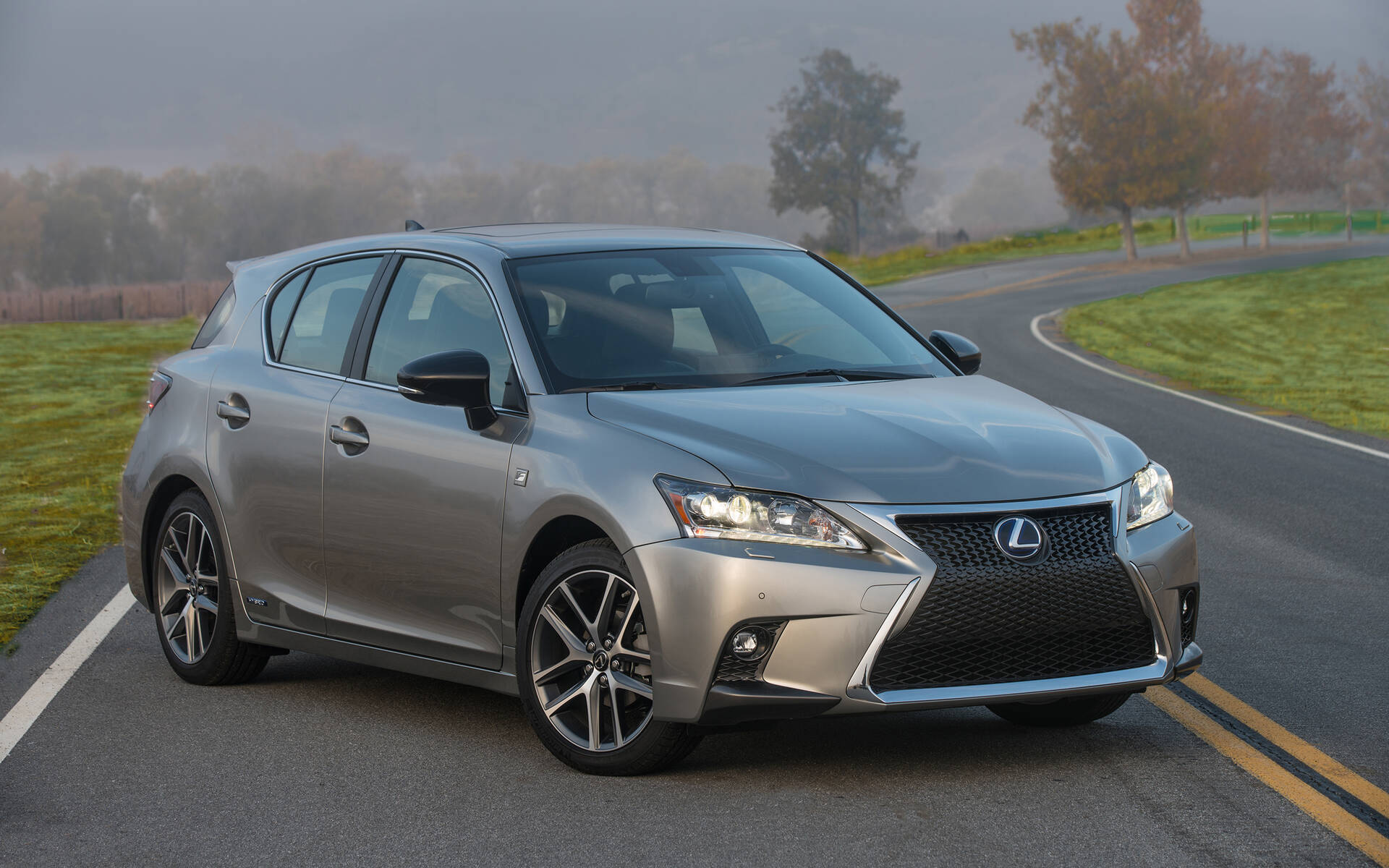
The engine can become quite noisy when it kicks in, and the ride quality leaves much to be desired, especially at low and high speeds when the car is equipped with larger alloy wheels. Still, it remains a strong contender for those who prioritise reliability.
Reliability rating: 98.9%
We found a 2012 Lexus CT 1.8 200h SE-L with 36,000 miles listed for £8,499.
Lexus was well ahead of its time when it introduced the CT 200h back in 2011. At a time when no other premium automakers were seriously backing hybrid hatchbacks, Lexus carved a unique path with this model—a strategy that has since become increasingly common.
Although the CT has been discontinued for some time, it still earns a spot on our list of the best used hybrid cars of 2023.
At the heart of the CT 200h lies its defining feature: a 1.8-litre petrol-electric hybrid powertrain. This setup delivers a cleaner alternative to diesel-powered used models from competitors like the Audi A3, BMW 1 Series, and Mercedes-Benz A-Class.
There’s plenty to appreciate about the CT. True to Lexus form, it’s solidly built and comes loaded with standard features. However, the infotainment system is a mixed bag—it tends to polarize opinion due to its unique interface and design quirks.
If you’re searching the classifieds, it’s worth noting that early production models suffered from an overly firm ride. Later versions aren’t perfect either, as they can feel outdated when compared to similarly aged Audis and BMWs.
The CT received styling and equipment updates in both 2014 and 2017 before its production ended in 2020, when it was effectively replaced by the Lexus UX SUV. If you’re interested in a used CT, continue reading for our full evaluation of its final version.
When it comes to the engine, the CT 200h relies on a 1.8-litre Atkinson cycle petrol engine mated to an electric motor—an arrangement lifted from the Toyota Prius.
This self-charging hybrid setup produces a combined output of 134bhp. Unlike newer Lexus models such as the UX, there’s no option for a more powerful 2.0-litre hybrid system.
This system isn’t plug-in, meaning it can’t be charged externally like the Mercedes A 250 e or Volkswagen Golf GTE to extend electric-only range. Its fuel economy under WLTP regulations is a modest 55.3mpg, and while that might not be headline-worthy, the 97g/km CO2 output is an attractive perk for company car drivers.
As far as the driving experience goes, the CT 200h is perfectly adequate in urban settings. The electric motor helps fill torque gaps, making acceleration from a standstill smooth and responsive.
When driven gently, transitions between petrol and electric power are seamless, and the CVT gearbox contributes to a quiet, composed ride.
However, problems arise when more power is needed. Asking the car to accelerate quickly results in a harsh, drawn-out groan from the engine—reminiscent of a “stuck cow”—making overtakes or merging onto highways a noisy ordeal.
Attempting to reach the 0-62mph time of 10.3 seconds demands patience—and perhaps ear protection—due to the CVT’s tendency to hold revs in a narrow power band.
While the system performs adequately at low speeds with help from the electric motor, it struggles to deliver satisfying performance under harder driving conditions.
Though improved over earlier versions, the CT still isn’t the most refined choice for long motorway trips. For extended highway cruising, a diesel alternative would remain the more comfortable option.
6. Lexus RX (2009-2016)
Next, the Lexus RX (2009–2016) continues the trend of reliable Lexus vehicles. You might not be surprised to see another Lexus on this list, and the third-generation RX proves its worth as a very dependable SUV.
It features a durable 3.5-litre V6 petrol engine paired with an electric motor that collectively produces 295bhp. The electric motor also helps lower running costs by enabling the car to run on electric power at speeds up to 30mph.
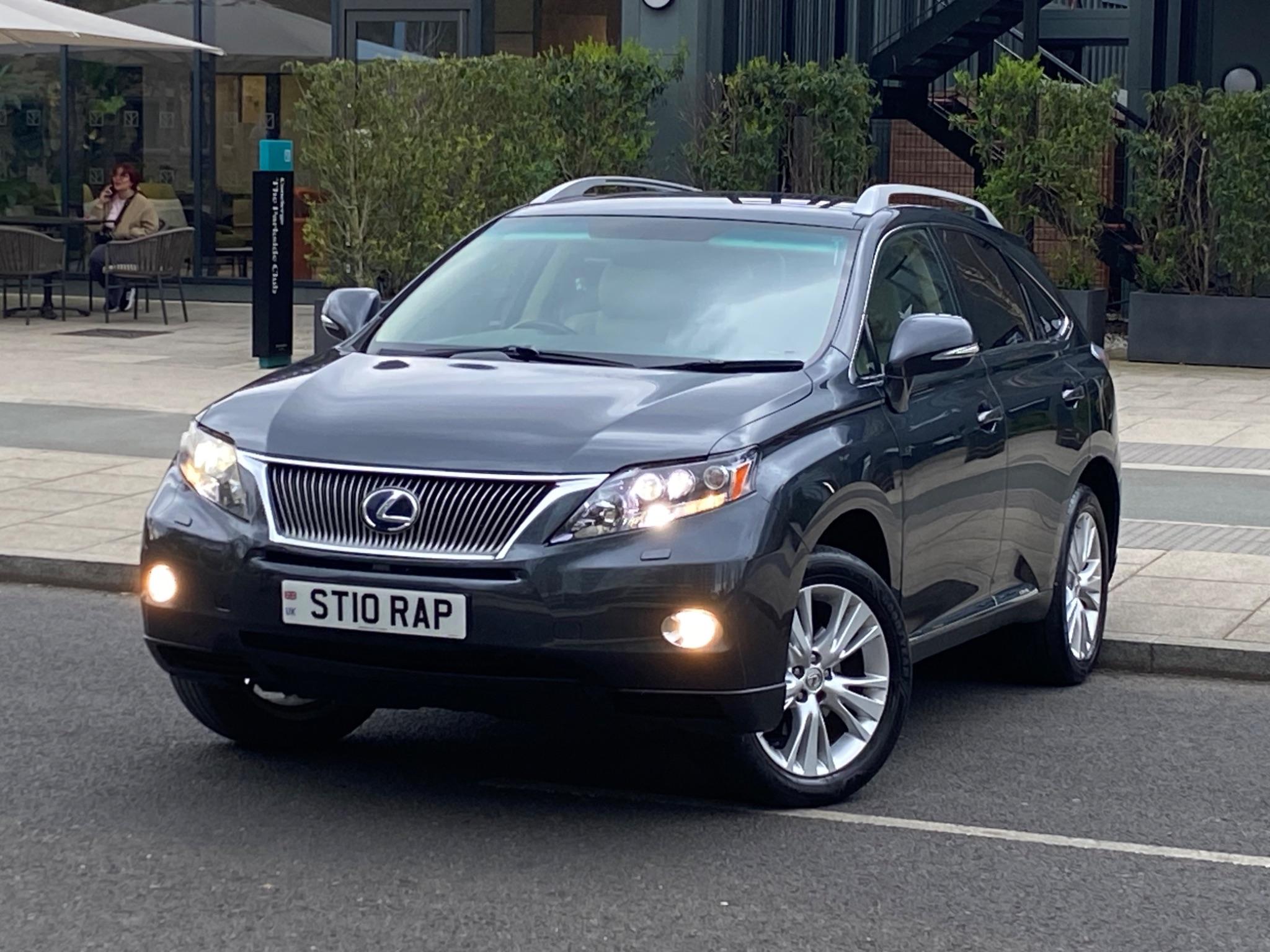
However, despite its class-leading reliability, the RX doesn’t offer the most comfortable ride, especially around town where ridges and potholes can unsettle it. Nonetheless, its overall refinement and supportive seats contribute positively to the driving experience.
Reliability rating: 98.6%
We found a 2014 Lexus RX 3.5 450h Luxury with 49,000 miles for £14,989.
7. Honda Civic petrol
Another worthy mention is the petrol-powered Honda Civic from the 2012–2017 range. Our pick is the 2.0 eHEV Sport 5dr CVT, which reaches 0-62mph in 7.9 seconds, returns 56.5mpg, emits 113g/km of CO₂, and offers a boot capacity of 415 litres while seating five.
It falls into insurance group 28E. The British-built ninth-generation Civic is known for its very high reliability, aided by engines that use timing chains, as well as a cleverly placed particulate filter on the 1.6-litre diesel version, allowing it to heat up faster and operate more efficiently.

The Civic also scores points for practicality, with a large boot and Honda’s ‘Magic Seats’ system, which can either fold completely flat or flip up to accommodate taller items.
Reliability rating: 98.4%
That said, it’s not without flaws rear headroom is limited, the dashboard layout is rather fussy, and some buyers may find the car a bit expensive for its segment. We found a 2015 Honda Civic 1.4 i-VTEC S with 51,006 miles priced at £6,990.
When you’re juggling the fast-paced demands of family life, simplicity often goes a long way—and that’s an area where the Honda Civic excels.
This latest iteration, the 11th-generation Civic, takes a streamlined approach by offering just one engine option—unless you’re considering the high-performance Civic Type R—one bodystyle in the form of a five-door hatchback, and a limited but well-rounded selection of three trim levels.
While that may seem a bit limiting at first glance, the package Honda delivers here ticks nearly every box a modern family car shopper might have.
The single engine offering is a 2.0-litre petrol unit paired with hybrid technology, designed to boost efficiency without compromising usability.
The three available trims come generously equipped, and the hatchback form makes the Civic a practical choice when stacked up against segment competitors like the Audi A3.
In fact, while it faces strong competition from models such as the Skoda Octavia and Toyota Corolla, the Civic makes a compelling case of its own. Whether it can truly outshine those established names is something we explore further in this review of the best family cars.
From a broad perspective, there’s very little to criticize about the Honda Civic e\:HEV. It’s fun to drive, practical for everyday needs, and economical to own.
While a few rivals do offer more spacious rear seats and quieter cabins, the Civic fights back with excellent standard equipment and class-leading efficiency. If you’re planning to buy one, the mid-tier Sport trim offers the best balance of value and features.
Some of the Civic’s standout positives include impressive fuel economy, a spacious boot, and a suite of advanced luxury and safety features. On the flip side, it can be a bit expensive compared to some rivals, rear headroom is somewhat limited, and road noise is noticeable—especially on highways.
Pricing for the Civic starts at £31,250, with leasing deals from around £632 per month. The Civic 2.0 eHEV Sport 5dr CVT, priced at £35,780, is our recommended pick in the lineup.
As for performance and driving dynamics, the Civic delivers a commendable experience. The e\:HEV hybrid system is the sole powertrain choice and produces a solid 181bhp.
That’s more than enough for most drivers—our testing saw the Civic go from 0 to 60mph in just 6.8 seconds, which outpaces competitors like the Toyota Corolla.
At low speeds, the Civic operates quietly and smoothly on electric power alone. As the speed increases, the petrol engine kicks in seamlessly, aided by a single-speed automatic transmission that maintains consistent and fluid acceleration.
It’s also noticeably quieter than the 1.5-litre hybrid engine in Honda’s own HR-V SUV, and wind noise is kept to a minimum.
However, road noise becomes more pronounced at motorway speeds, especially in the top-end Advance models, which feature a panoramic glass sunroof. At a 70mph cruise, competitors such as the Corolla and VW Golf manage to keep things a bit quieter.
Ride quality is another strong suit of the Civic. It’s more refined than the Seat Leon FR Sport when both are fitted with 18-inch alloy wheels.
Stick with the base model’s 17-inch wheels and you’ll enjoy even greater comfort. Still, if supreme ride comfort is your priority, both the Corolla and the Golf remain slightly more compliant.
Interestingly, the Civic’s ride actually improves at higher speeds when equipped with 18-inch wheels. While it may not be as agile or eager in corners as a Ford Focus or a Seat Leon, it handles confidently thanks to excellent grip and well-weighted, accurate steering.
These qualities help the Civic maintain a fun-to-drive character, giving drivers the assurance to place it exactly where they want on the road.
8. Lexus RX (2016-2022)
The fourth-generation Lexus RX, produced from 2016 to 2022, addressed several issues found in its predecessor, most notably the ride quality, which became significantly more comfortable and smoother.
Inside, the RX boasts a pleasant and well-designed cabin featuring a solid dashboard with flowing lines and attractive styling elements.

Most of the RX models from this generation come equipped with a hybrid powertrain, combining a 3.5-litre V6 petrol engine with two electric motors to deliver a total output of 308bhp. This tried and tested setup plays a key role in the RX’s excellent reputation for reliability.
Reliability rating: 98.1%
We found a 2017 Lexus RX 3.5 450h Luxury with 36,500 miles priced at £21,995.
Lexus has continued refining the RX’s exterior, adopting updated design elements seen on the latest IS, NX, and RC coupe models.
The headlights have been reshaped to appear slimmer and now integrate more seamlessly with the bonnet, while the side air intakes flanking the revised spindle grille are more defined and aggressive.
At the rear, the exhaust pipe garnish now merges cleanly with the bumper. The F Sport and Takumi trims come equipped with the new ‘BladeScan’ LED headlights, which Lexus claims offer a much faster response than previous adaptive lighting systems.
Compared to the previous generation, the RX now benefits from a series of aerodynamic enhancements. These include a front under spoiler, a full-width rear spoiler atop the tailgate, and a rear bumper diffuser—all designed to cut drag and improve high-speed stability.
Thanks to its increased exterior dimensions, the latest RX also offers improved cabin space. Front occupants enjoy more headroom, while rear-seat passengers benefit from additional legroom.
For those needing extra seating, the RX L variant offers a stretched and more vertical rear section that accommodates two extra seats.
These seats are on the smaller side and are generally more comfortable for children or for short trips with adult passengers. The rear cabin in this version also features its own set of air conditioning controls for added comfort.
9. Mazda CX-5
Moving on to the Mazda CX-5, this is an excellent choice for those seeking a stylish and dependable used SUV. It features a premium-feeling interior, a user-friendly infotainment system, and precise handling.
For the best reliability, it’s wise to stick with the petrol variants, as they tend to be more robust than the diesel counterparts.
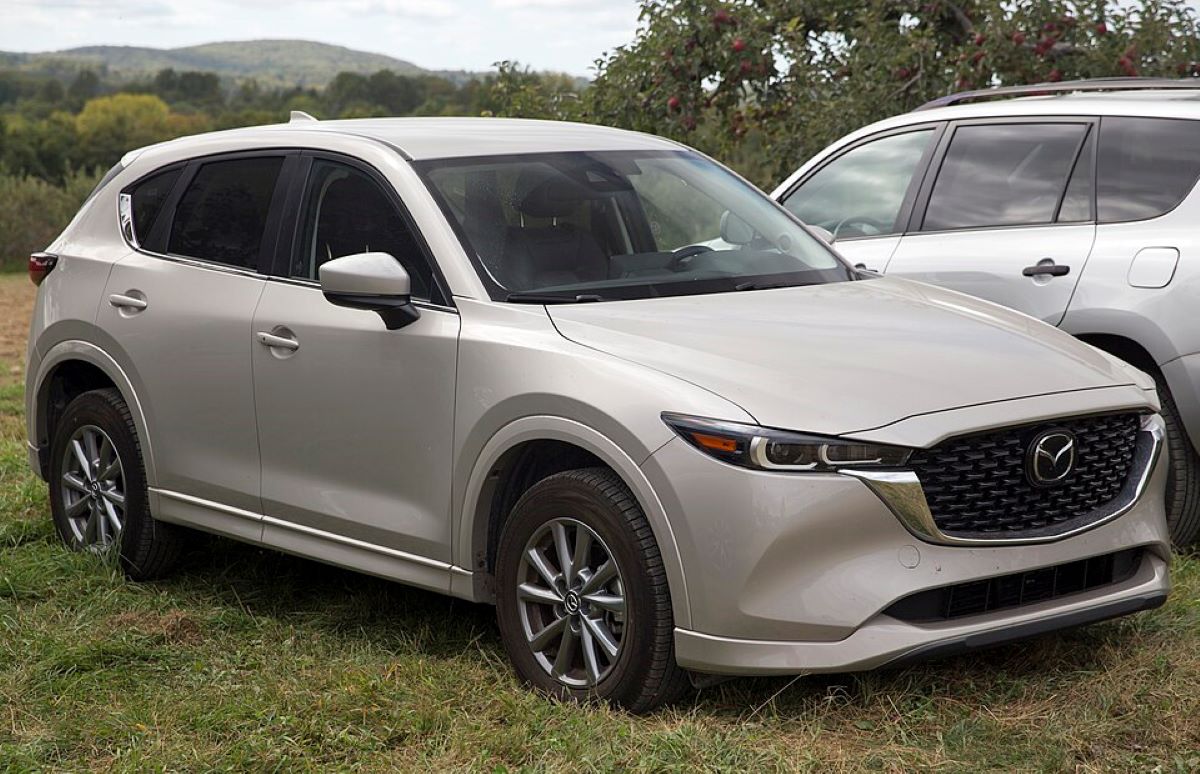
The 2.0-litre petrol engine strikes the best balance between performance and fuel economy, making it our top recommendation. While the more powerful 2.5-litre petrol version is available, its thirstier nature makes it harder to justify.
Reliability rating: 98.1%
We found a 2018 Mazda CX-5 2.0 Skyactiv-G SE-L Nav+ with 52,344 miles listed at £12,441.
The Mazda CX-5 offers a towing capacity of up to 2000 pounds—modest, but still better than some rivals like the Volkswagen Tiguan and Honda CR-V.
For those needing more pulling power, the CX-50 steps up with a maximum towing capacity of 3500 pounds, though that figure applies only when equipped with the turbocharged engine. Without the turbo, the CX-50 matches the CX-5’s 2000-pound limit.
The CX-5 is available with two different engines, each with its own fuel economy rating. The base 2.5-liter engine achieves 26 mpg in the city and 31 mpg on the highway, while the turbocharged version delivers slightly lower figures at 22 mpg city and 27 mpg highway.
When tested on our 75-mph highway loop—part of our standardized fuel economy evaluation—the base engine managed 32 mpg, while the turbocharged version returned 30 mpg. You can find more official details on the CX-5’s fuel efficiency on the EPA’s website.
Step into the upper trims of the CX-5, and you could easily mistake it for a more premium brand—perhaps even an Audi or a Mercedes. High-quality materials and a thoughtful design give the cabin a distinctly upscale ambiance.
Details like the floor-hinged accelerator pedal offer a more refined feel compared to the typical top-hinged setup, while the precisely aligned steering wheel and evenly placed front armrests add to driver and passenger comfort.
There are a few compromises, though. Rear-seat space is merely adequate for adults, and the cargo area isn’t particularly expansive, accommodating just nine carry-on bags behind the rear seats in our test. However, the cargo bay is made more practical thanks to a completely flat load floor.
Inside the cabin, storage is well considered, with various small compartments for phones and other items. The center console features a large front tray and a versatile bin with a removable shelf, enhancing everyday usability.
10. Toyota Auris
The Toyota Auris may not deliver excitement behind the wheel, but it excels as a dependable and practical family car. It maintains a solid reputation for reliability across all available engines.
Among the options, the 1.2-litre turbocharged petrol engine is a standout thanks to its smooth and responsive performance, while the hybrid variant is ideal for those prioritising fuel efficiency.
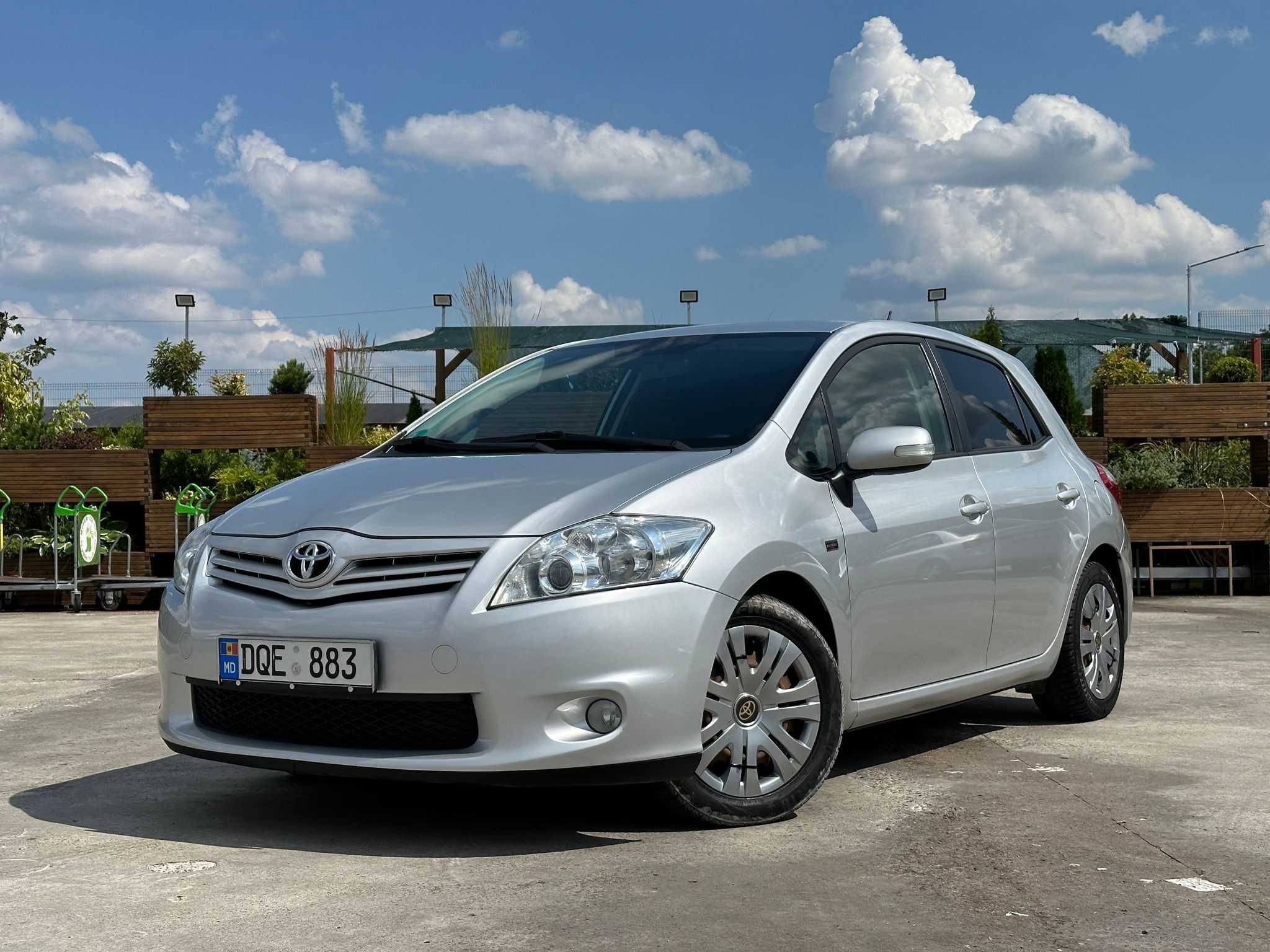
Additionally, these two versions benefit from a more advanced suspension setup than earlier models equipped with the 1.3-litre petrol or 1.4-litre diesel engines, resulting in a more comfortable ride.
Reliability rating: 97%
We found a 2016 Toyota Auris 1.2 VVT-i Business Edition with 54,700 miles for £6,990. The interior of the Toyota Auris offers a respectable amount of space for both passengers and their belongings.
However, when it comes to everyday usability, the Honda Civic still has the upper hand. The Auris cabin feels solidly built, and the layout is fairly intuitive, but—much like its exterior styling—it doesn’t do much to stir excitement.
That lack of excitement, though, isn’t necessarily a disadvantage behind the wheel. The Auris is straightforward to drive, thanks to its light steering and user-friendly controls.
It’s not a car that’s going to appeal to aspiring race car drivers—but then again, those individuals likely aren’t reading this review. Where the Auris redeems itself somewhat is under the hood, with the optional hybrid system offering a modest electric-only range that’s especially useful for urban driving.
One of the biggest selling points of the Toyota Auris is its sterling reputation for dependability. Sure, the reliability of most modern cars has improved significantly over the past decade, but for many buyers, the peace of mind that comes with owning a proven, well-built Toyota is a major draw.
This sense of security is further bolstered by the Auris winning its category in the 2016 JD Power reliability survey.
Across the trim lineup, equipment levels are fairly generous—just steer clear of the basic Access model, which comes lightly equipped. Most mid-range variants come well-stocked with features, and buyers can add sat-nav for £750 and leather upholstery for £950.
When it comes to pricing, the Auris holds its own against rivals like the Ford Focus, both in terms of trim levels and available options.
Despite being well-rounded in many areas, the Toyota Auris falls a bit short when measured against top competitors. The Volkswagen Golf stands out as a stronger all-rounder, especially if you’re considering an automatic transmission.
Meanwhile, the Honda Civic proves to be the more practical and spacious family car. On the road, the Auris doesn’t offer standout comfort or engagement, leaving its overall identity a bit undefined.
That said, things become more compelling when considering the hybrid version. Although it shares many of the standard model’s shortcomings, the addition of electric-only driving capability gives it a clear edge in urban environments.
Its ability to run on battery power alone in stop-and-go traffic means that city drivers could feasibly get through their commutes using minimal fuel.
The Toyota Auris carries an RRP range from £15,385 to £26,991. On Carwow, used models start from £5,695.
For those prioritizing people-hauling and cabin storage, the Auris is more than up to the task. However, if you’re focused on boot space, some rivals may better meet your needs.
Most buyers will likely just want a car that’s easy and comfortable to drive, and in that respect, the Toyota Auris does not disappoint.

